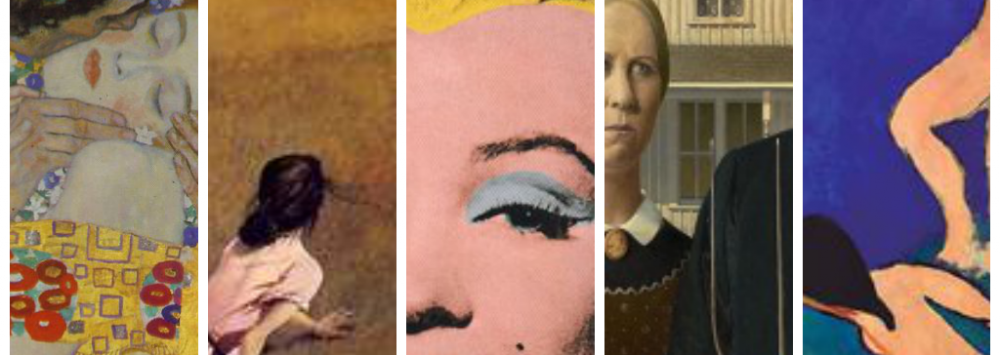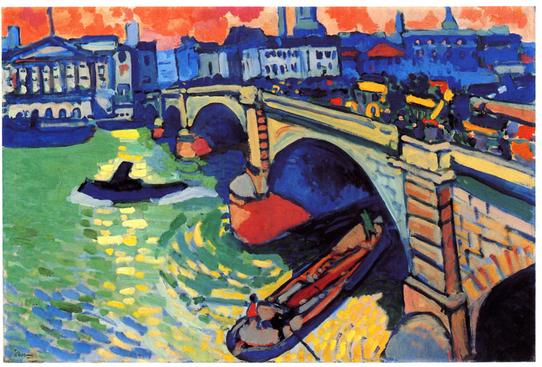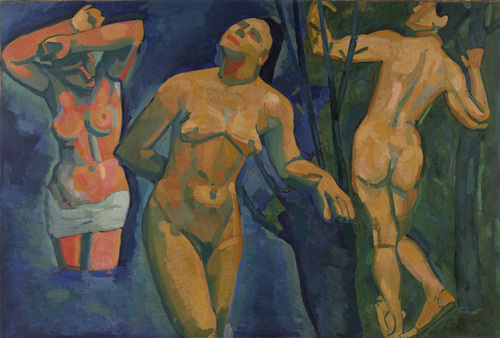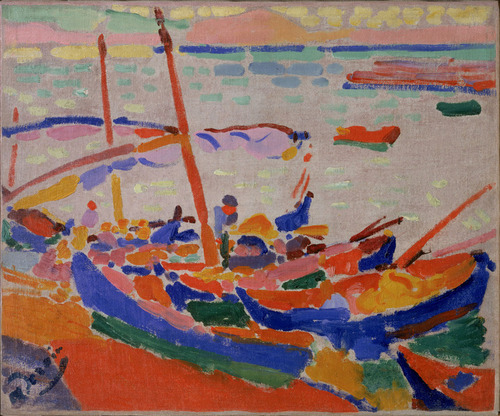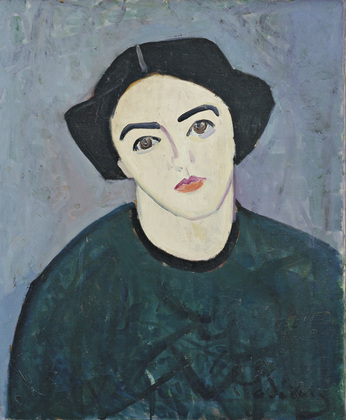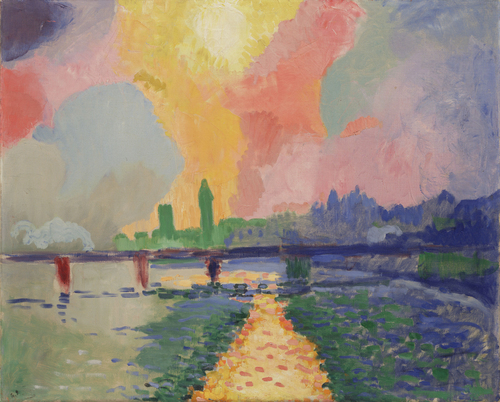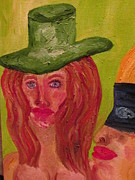*** ANDRE DERAIN ***
By: Natalie Pompos
BIOGRAPHY, INFLUENCES, MEDIA, TECHNIQUE
On June 10, 1880, Andre Derain was born just outside of Paris in Chatou, Yvelines, Île-de-France. Throughout his early education, he preformed quite poorly in school. However, he gained attention from his classmates and instructors due to his impressive innate artistic abilities—especially in the mediums of drawing, sculpture, painting. When Derain turned 15, he began formal art lessons. Even after being accepted to Académie Camillo to study engineering, Derain continued with his art lessons. In 1898, while studying painting under the tutelage of Eugène Carrière, he was introduced to Henri Matisse. Two years later he became friends with Maurice de Vlaminck due to them sharing a studio space. Derain’s studies were interrupted in September of 1901 due to obligatory military service. Before Derain reported for his service, he introduced his companions Matisse and Vlaminck to one another. The relationships formed between these three men greatly shaped the development of the Fauvist movement.
Following Derain’s return from the military in 1904, he convinced his parents to permit him to cease his engineering studies and enroll in art school at the Académie Julian. 1905 marked the beginning of Derain’s coming successes. In that year Daniel-Henry Kahnweiler, a prominent art collector, purchased all of Derain’s works from his studio. In addition, Derain showcased and sold several of his pieces at the prestigious Salon des Independants and Salon d’Automne. Derain developed a strong connection with the art dealer who bought many of his initial studio pieces. In 1906, the Kahnweiler requested Derain relocate to London for more inspiration. Derain completed 30 works in England. His piece of the London Bridge is one of the most notable. 1906 also marked the year Derain met future confidant Pablo Picasso. Picasso had a significant influence over Derain’s experiments involving the cubism style. At the time Picasso and Derain were introduced, Derain was dabbling in a career of illustration having completed two books.
In 1914, Derain’s pursuits were interrupted again due to military service. When he returned in 1919, he began to nurture a more classical style of painting and drawing. Derain’s artistic career led him to great prominence. However, Derain’s career began to encounter turmoil when he was requested to paint a portrait of Hitler’s family. Even though he attended an official visit to Germany, Derain did not want to be commissioned for this work. Despite his refusal to complete the portrait, the connection he established with Hitler marred his reputation throughout the world. Derain lived his final years with a debilitating eye infection. At the age of 74, he died in an automobile accident on September 8, 1954 in Garches, Hauts-de-Seine, Île-de-France.
MOVEMENT, STYLE, SUBJECT MATTER
Andre Derain is highly regarded for his painting, sculpting, and drawing abilities. He along with close friend Henri Matisse are regarded as the co-founders of Fauvism. The Fauvist Movement is noted as the original avant-garde movement. This movement flourished in the beginning of the 20th century concentrated in France. The year 1905 is coined as its official date of origin. Fauvist artists utilized bright colours to express joyful emotions. In addition, their utilization of colour was not confined to the realistic works in Impressionism and other classical movements. Fauvists utilized colours also as light sources and applied a great deal of outlining techniques that were also significant to the Expressionist Movement.
As a cofounder of the Fauvism, Derain’s style embodied the characteristics of the movement. His works are widely praised for their unique bright colouring, outlining, and simplified forms. Moreover, his works are appreciated due to their wide variety of subject material.
Derain’s works encompass majestic landscapes, depictions of infatuation for the human form, and architectural accomplishments.
21st CENTURY COMPARISON
Andre Derain’s work can be compared to the 21st century artist Shea Holliman. While Holliman is not regarded with such popularity as Derain, her work exhibits similar characteristics. Like Derain, Holliman received formal art training. Throughout her training she focused on painting, drawing, and sculpture. Holliman’s style is very complimentary of the Fauvist Movement. Many of her pieces showcase bright colours expressing joyous emotions, sharp outlining, and simplified forms.
PERSONAL REFLECTION
As an avid photographer, I have always had an appreciation for precise, detailed, and realistic pieces of artwork. Consequently, my palate is commonly drawn to classical artwork for its accurate portrayals of subject matter. When I was initially exposed to the Fauvist Movement in this class, I had mixed emotions. The freedom of colour application, detailing, and simplified forms contrasts so sharply from artwork I typically enjoy. However, my research of Fauvism and in particular the artist Andre Derain has increased my appreciation for this unique era. I am amazed by the contrasting nature of the artwork that emerged during the Fauvist Movement compared to that of movements preceding its origins. I appreciate the “wild beasts” courage, innate artist abilities, sense of collaboration within their movement, and willingness to challenge the time period’s artistic norm. The Fauvist Movement and Andre Derain are truly revolutionary.
BIBLIOGRAPHY
“André Derain 1880â1954.” André Derain. N.p., n.d. Web. 28 Mar. 2014. <http://www.tate.org.uk/art/artists/andre-derain-998>.
“André Derain.” Andre Derain Online. N.p., n.d. Web. 28 Mar. 2014. <http://www.artcyclopedia.com/artists/derain_andre.html>.
“André Derain Biography.” Bio.com. A&E Networks Television, n.d. Web. 28 Mar. 2014. <http://www.biography.com/people/andr%C3%A9-derain-38136>.
“André Derain (French, 1880-1954).” André Derain on Artnet. N.p., n.d. Web. 28 Mar. 2014. <http://www.artnet.com/artists/andr%C3%A9-derain/>.
“Andre Derain Artists.” The Arts Council RSS. N.p., n.d. Web. 28 Mar. 2014. <http://www.theartscouncil.org/artists/>.
“THE COLLECTION.” MoMA.org. N.p., n.d. Web. 28 Mar. 2014. <http://www.moma.org/collection/artist.php?artist_id=1500>.
“Shea Holliman.” – Fine Art. N.p., n.d. Web. 28 Mar. 2014. <http://fineartamerica.com/profiles/shea-holliman.html>.
